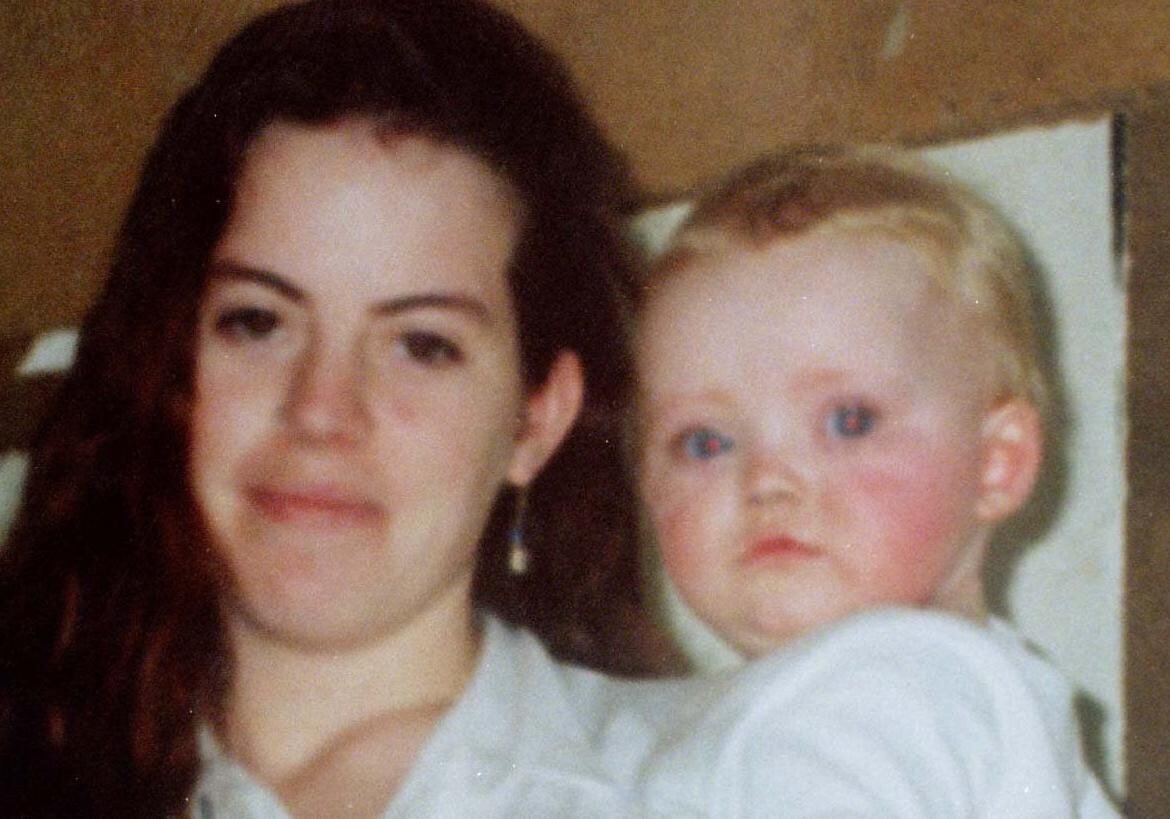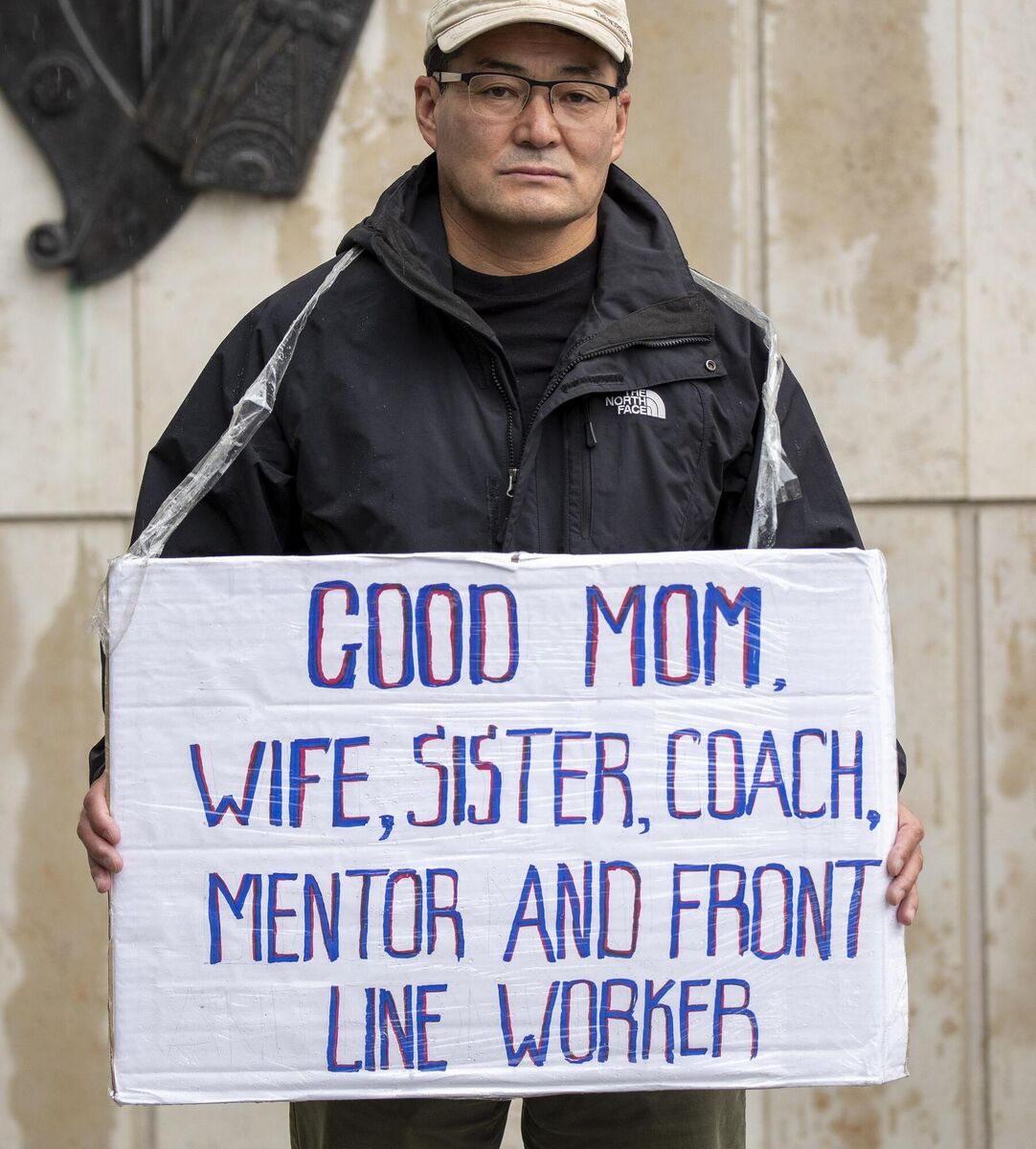Joyce Fegan: It will take a village, and the intervention of bystanders, to tackle misogyny

A photo of murdered school teacher Ashling Murphy displayed on the big screen at half time during the Connacht v Leicester Tigers Champions Cup rugby match at The Sportsground in Galway. Picture: Thomas Ash
Did you watch Ashling Murphy’s funeral online? Did you attend a vigil? Did you listen to our politicians in the Dáil calling this a “watershed” moment?
Today, do you find yourself wondering is it all over?
Are your embers of grief and outrage still there, and are you wondering how we can turn all that was said and felt into meaningful change for once and for all?
Savita Halappanavar’s tragic death in 2012 lit an unquenchable fire under the Repeal movement. Until then, there had always been the trailblazing and brave activists who fought for reproductive rights, as hundreds of thousands, girls and women, travelled to England or took abortion pills bought online.
However, Savita’s death in 2012, which followed so many awful court cases called after different letters of the alphabet, became the final spark that led to Repeal.
It was 2018 before our petrified politicians finally granted us a referendum on the matter — and the people were more than ready. They turned out in record numbers to deliver a landslide vote to return to women the right to control their own bodies.

Will Ashling Murphy’s tragic death be the final spark that forces our political establishment to take bold and comprehensive action so women can finally feel safe in their own bodies?
Right now, there are several court cases pending in Ireland regarding women who were killed going about the normal course of their lives. Some were at home. Some were walking home. All of the accused are men, some young, some old.
For now, let’s not name the women, nor the accused, so as to avoid prejudicing a fair trial.
Of course there are many women we can name, because their killers were neither charged nor tried for their abominable crimes. There is no trial to prejudice.
Fiona Sinnott, 19, went missing near her home in Wexford in February 1998. Her body has never been found.

She was preparing to celebrate her daughter’s milestone first birthday. So far her family has resorted to digging up a septic tank in their unending pursuit of giving Fiona a dignified burial. They’ve erected plaques in her memory. They’ve been anonymously ripped down. Fiona’s family fights on. Do we help them?
Fiona Pender, 25, went missing in August 1996. She was seven months pregnant at the time of her disappearance and had been shopping for baby clothes the day before she went missing.
She was last seen at her flat in Tullamore, Co Offaly. She is missing feared murdered.
Her father, Sean, died in 2000, never knowing what happened to his daughter. Her mother, Josephine, who campaigned tirelessly for justice, died in 2017.
With her killer still at large, who will campaign for Fiona now? Will we step in where Josephine left off, in the wake of our spark of intolerance for men’s violence against women?
These are just two of the 244 women and girls who died violently in Ireland since 1996. A total of 62% of these women and girls were killed not on a night out, nor down a dark alleyway, but in the so-called “safety of their own homes”.
Where the cases have been resolved, 87% of the women and girls were killed by a man known to them. So what can we do about it?
The real question is: How do you solve a problem like misogyny?
Murder is what happens at the end of the line.
However, before misogyny turns fatal, there are the supposedly benign things we’ve been programmed to accept as part of our culture: the sexist jokes made in every setting; the backlash and ridicule when you call them out; the lads’ WhatsApp group where images of women’s breasts are passed around; the too-close male colleague in the cramped kitchenette; the enraged man as you made the call not to break the amber light; the ass-grab at a bar; the wolf-whistling and cat-calling on your local street; the male friend who won’t take no for an answer; the partner who monitors your phone use and gets inside your head; and then the man who pushes you down the stairs.
It’s a pretty straight ladder that we’re all propping up somewhere along the way, ignorant to how the rungs all lead to the one end. But there is so, so much we can do to dismantle our ladder of misogyny — if we’re willing that is.
Let’s start with who you are and the roles you play. If you play one of the following roles, your choices are plentiful: Business owner; manager; sports coach; club president; or a director of any organisation.

The first choice available to you is to ask your employees or players to take an anonymous survey. It’s called “taking the pulse” to see if any one has experienced acts of sexism or received sexist remarks in the organisation you hold responsibility in.
Think you’re just asking for legal trouble? There are plenty of well-drafted “gender in the workplace” survey templates available online.
Imagine the legal trouble you might get into if you don’t address a serious problem that is already burgeoning in your organisation.
Another choice open to you is to ask your people to take a Harvard test. It’s a short online test that helps to reveal “unconscious bias” — our preconditioned mindsets about certain things, like preferring thin people to fat people.
You can find Harvard’s free tests by searching “Implicit Project” online.
If you’re a parent/guardian/grandparent/school teacher or principal, bear in mind that “sexism starts in childhood”. For a parent to raise a non-sexist child, they need to push a far stronger message at home to combat the litany of messages that society relays in relation to boys’ and girls’ roles.
Parents already have bedtimes to contend with, green vegetables to sneak into meals, and homework to supervise, among the many other tasks and asks of parenthood. Suffice it to say, tackling the roots of sexism takes a village, not a lone parent.
Our unconscious biases show up in how we all deal with children, in the presents we buy them, in the hobbies we introduce to them, in the colour of the clothes we dress them in, in the books we read to them, and in the chores we assign to them. However, the only thing a young child is scientifically proven to show a preference for is connection with their key attachment figures.
• If you do not fit into any of the roles above, any member of the public can take part in University College Cork’s Bystander Intervention programme in May for €10. You can find the course at exa.mn/BystanderCourse.
• Tomorrow an anniversary Mass will be celebrated for another woman who died violently in Ireland in the last 12 months. If enough really is enough, what one action will you take to dismantle our fatal ladder of misogyny?














